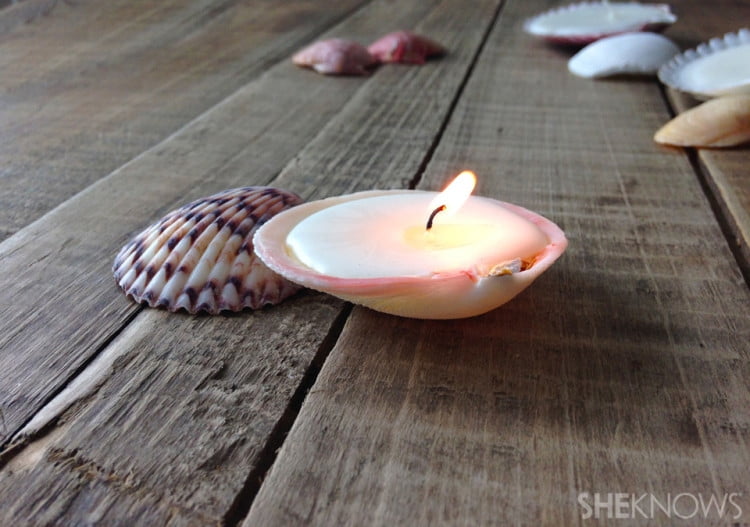Soy candle making has gained popularity in recent years due to its eco-friendly and sustainable nature. An essential aspect of creating high-quality soy candles is understanding the importance of the melting point in the process. The melting point refers to the temperature at which a solid substance turns into a liquid, crucial for achieving the desired consistency and performance of your candles.
When it comes to soy candle making, mastering the melting point is key to producing candles that burn evenly and release fragrance effectively. The science behind melting points involves knowing how different waxes behave under heat and pressure, influencing factors such as burn time, scent throw, and overall quality of the candle. By understanding these principles, candle makers can create products that stand out in terms of both aesthetics and functionality.
Factors such as the type of soy wax used, additives like fragrances or dyes, and even the size and shape of the container can affect the melting point of your candles. Choosing the right melting point for your specific needs is crucial in achieving optimal results.
With proper testing and adjustments, you can fine-tune this aspect to ensure that your soy candles meet your expectations. by paying careful attention to all these aspects, you can elevate your soy candle making skills and create products that delight customers with their beauty and performance.
Understanding the Importance of Melting Point in Candle Making
Soy wax is a popular choice among candle makers due to its clean-burning properties and environmentally friendly nature. When it comes to creating soy candles, one crucial factor to consider is the melting point of the wax. The melting point refers to the temperature at which the solid wax turns into a liquid state, making it essential in determining the quality and performance of your candles.
Importance of Melting Point in Candle Making
The melting point plays a significant role in how your candles will burn. If the wax has a low melting point, the candle may burn quickly, resulting in uneven and inefficient burning.
On the other hand, wax with a high melting point may not release enough fragrance or melt evenly, leading to tunneling and wasted wax. By understanding and adjusting the melting point of your soy wax, you can achieve optimal burning characteristics and enhance the overall performance of your candles.
Effects of Melting Point on Candle Performance
The melting point also affects various aspects of candle performance, such as scent throw, burn time, and appearance. Soy waxes with higher melting points tend to hold fragrances better and produce a stronger scent throw when burned.
Additionally, candles made with soy wax that has been properly tempered to the ideal melting point will have a smoother finish and cleaner burn than those with inconsistent temperatures. Therefore, mastering the melting point for soy candle making is essential for producing high-quality candles that meet both aesthetic and functional requirements.
The Science Behind Melting Point for Soy Candles
Soy candle making involves the use of soy wax, which is a natural and renewable resource compared to traditional paraffin wax. The process of making soy candles includes melting the soy wax to a specific temperature in order to achieve the desired consistency for pouring into candle containers or molds. This is where understanding the melting point for soy candle making becomes crucial for candle makers.
The melting point of soy wax typically ranges between 115 to 180 degrees Fahrenheit, depending on the specific type and blend of soy wax being used. Achieving the correct melting point is essential because it determines how well the fragrance oils will bind with the wax, as well as how smooth and even the burn of the candle will be.
If the wax is not melted to the appropriate temperature, it can lead to issues such as poor scent throw, frosting, tunneling, and uneven burning.
To delve into the science behind melting point for soy candles, it’s important to understand that soy wax is derived from hydrogenated soybean oil. The composition of soy wax influences its physical properties, such as its melting point and hardness.
Soy wax has a lower melting point compared to paraffin wax, which allows it to burn more slowly and evenly. Additionally, soy wax has a memory feature where it retains its shape based on its initial burn, making it crucial to achieve the right melting point during each pour for consistent results.
When dealing with melting point in soy candle making, factors such as ambient temperature, humidity levels, fragrance oils used, and additives like colorants can all affect the overall performance of the candles. It’s important for candle makers to consider these variables when determining the ideal melting point for their specific recipe or desired candle characteristics.
By understanding both the art and science behind achieving the perfect melting point for soy candles, one can create high-quality candles with optimal burn times and fragrance diffusion.
| Important Data | Details |
|---|---|
| Melting Point Range for Soy Wax | 115-180 degrees Fahrenheit |
| Composition of Soy Wax | Derived from hydrogenated soybean oil; influences properties like melting point and hardness |
| Factors Affecting Melting Point | Ambient temperature, humidity levels, type of fragrance oils used, additives like colorants |
Factors Affecting Melting Point in Soy Candle Making
When it comes to making soy candles, the melting point plays a crucial role in determining the quality and performance of the final product. The melting point refers to the temperature at which the solid wax begins to liquefy and is an essential factor to consider during the candle-making process. Different types of waxes, including soy wax, have varying melting points that directly impact how the candle burns, its scent throw, and overall longevity.
One of the primary factors that affect the melting point in soy candle making is the type and quality of soy wax used. The purity and composition of soy wax can influence its melting characteristics significantly. For example, lower-quality or blended soy waxes may have inconsistent melting points, leading to issues such as tunneling or uneven burning. It is vital to choose a high-quality, pure soy wax with a consistent melting point for optimal results.
Additionally, additives such as fragrance oils, colorants, and other enhancements can also impact the melting point of soy candles. Fragrance oils specifically can alter the chemical composition of the wax and change its melting properties.
It is essential to carefully measure and test additives to ensure they do not negatively affect the desired melting point for your candles. By understanding how these factors interact with your soy wax, you can adjust and customize the melting point to achieve the perfect balance for your specific candle-making needs.
| Factors | Impact on Melting Point |
|---|---|
| Type of Soy Wax | Determines consistency and reliability of melting point |
| Additives | Can alter chemical composition and affect melting properties |
Choosing the Right Melting Point for Your Candle
When it comes to creating the perfect soy candle, choosing the right melting point is crucial. The melting point of wax determines how well the candle will burn, how long it will last, and even the scent throw it will give off. Understanding and selecting the appropriate melting point for your soy candles can make a significant difference in the final product.
To help you choose the right melting point for your candle, consider the following factors:
- The type of soy wax you are using: Different types of soy waxes have different melting points. It’s essential to know which type you are working with to select the optimal melting point.
- The size and shape of your container: Larger containers may require a higher melting point to ensure an even burn, while smaller containers may need a lower melting point.
- The desired burn time: If you want your candle to burn for a longer period, you may need to choose a wax with a higher melting point.
Additionally, keep in mind that experimentation and testing are key when determining the ideal melting point for your soy candles. Start by trying out different melting points and observing how they affect the burning characteristics of your candles. By making adjustments and fine-tuning along the way, you can achieve the perfect balance for your specific candle-making process.
Remember that finding the right melting point for your soy candles may take some trial and error, but by paying attention to these factors and being patient with the process, you can master this essential aspect of candle making. Whether you prefer a slower or faster burn rate, a higher or lower scent throw, selecting the appropriate melting point will ultimately lead to more successful and satisfying results in your soy candle creations.
Testing and Adjusting Melting Point in Soy Candle Making
Soy candle making involves a delicate balance of factors to achieve the perfect candle, and one critical aspect to consider is the melting point of the wax. The melting point refers to the temperature at which the wax transitions from a solid to a liquid state. In soy candle making, finding the right melting point is essential for ensuring optimal fragrance release, burn time, and overall quality of the candle.
To test and adjust the melting point in soy candle making, there are several methods that can be used. One common way is to melt a small sample of wax and observe at what temperature it begins to liquefy. This will give you an idea of the wax’s current melting point. You can then adjust this by adding different types of waxes or additives that have higher or lower melting points until you achieve your desired result.
- Test a small sample of wax
- Observe at what temperature it starts to liquefy
- Adjust by adding different types of waxes or additives
It’s important to keep in mind that adjusting the melting point may also require testing different ratios of ingredients, as well as experimenting with pouring temperatures and cooling times. The goal is to find a balance that allows for a clean and even burn while maximizing fragrance diffusion. By carefully monitoring and fine-tuning the melting point, you can create high-quality soy candles that meet your specific requirements.
- Experiment with ratios of ingredients
- Adjust pouring temperatures and cooling times
- Focus on achieving a clean burn and optimal fragrance diffusion
Common Mistakes to Avoid When Dealing With Melting Point
Using Incorrect Thermometer
One common mistake to avoid when dealing with melting point in soy candle making is using an incorrect thermometer. It is essential to use a reliable and accurate thermometer to determine the exact temperature of the wax during the melting process. Using a thermometer that is not calibrated properly can lead to inaccurate readings, which may result in candles that do not burn properly or have a poor scent throw.
Rapid Heating or Cooling
Another mistake to avoid is rapid heating or cooling of the soy wax. It is important to heat the wax gradually and evenly to prevent any hot spots or uneven melting. Rapid heating can cause the wax to become scorched, affecting the quality and performance of the candles. Similarly, cooling the wax too quickly can lead to imperfections such as sinkholes or frosting on the surface of the candles.
Ignoring Environmental Factors
Ignoring environmental factors such as room temperature and humidity levels can also impact the melting point of soy candles. It is important to work in a clean and stable environment with consistent temperatures to achieve consistent results. Fluctuations in temperature can affect how the wax melts and solidifies, leading to inconsistencies in the final product. Be mindful of these factors when working with soy wax for optimal results in your candle making process.
Tips for Achieving the Perfect Melting Point in Soy Candle Making
When it comes to achieving the perfect melting point in soy candle making, there are several key tips to keep in mind. One important tip is to use a reliable thermometer to accurately monitor the temperature of your melted wax. It is crucial to heat the wax gradually and avoid overheating, as this can affect the quality of your candles. By keeping a close eye on the melting point, you can ensure that your candles turn out smooth and even.
Another tip for achieving the perfect melting point in soy candle making is to stir the wax consistently while it melts. Stirring helps distribute heat evenly throughout the wax, preventing hot spots that can lead to uneven burning later on. Additionally, stirring can help prevent any fragrance oils or dyes from settling at the bottom of your candle, ensuring a more uniform appearance and scent throw.
Lastly, consider experimenting with different pour temperatures to achieve the desired melting point for your soy candles. Some candle makers prefer a slightly higher pour temperature for a smoother finish, while others opt for a lower pour temperature for a more rustic look. By testing various pour temperatures and observing how they affect your candles’ texture and appearance, you can tailor your process to meet your specific preferences and create beautiful hand-poured soy candles every time.
Conclusion
In conclusion, mastering the melting point for soy candle making is crucial for achieving optimal success in your candle-making journey. By understanding the science behind melting points, considering various factors that can affect it, and testing and adjusting as needed, you can create high-quality soy candles that burn evenly and efficiently.
Choosing the right melting point for your specific candle recipe is essential in ensuring that your candles perform well. By avoiding common mistakes such as overheating or underheating the wax, you can prevent issues like tunneling or uneven burning. Taking the time to test different melting points and make adjustments as necessary will ultimately lead to a superior finished product.
With these tips and techniques in mind, you can confidently work towards achieving the perfect melting point for your soy candles. By honing your skills in this area of candle making, you can elevate the quality of your products and create candles that not only look beautiful but also burn cleanly and effectively. Mastering melting points will set you on the path to success in soy candle making.
Frequently Asked Questions
What Is the Melting Point of Soy Candles?
The melting point of soy candles is typically around 120 to 180 degrees Fahrenheit. This temperature range allows the soy wax to melt evenly and ensure a smooth consistency when pouring into candle containers.
What Temperature Do You Melt Soy Wax for Candles?
When melting soy wax for candles, it is recommended to heat it to a temperature between 170 to 185 degrees Fahrenheit. This temperature range helps ensure the soy wax fully melts, any fragrance oils are blended well, and provides optimal pouring conditions for candle making.
Do You Have to Heat Soy Wax to 180?
Heating soy wax to exactly 180 degrees Fahrenheit is not always necessary, as long as it reaches above its melting point for proper blending and pouring. However, some candle makers prefer heating up their soy wax to this specific temperature to achieve consistent results in their candle-making process.

Welcome to my candle making blog! In this blog, I will be sharing my tips and tricks for making candles. I will also be sharing some of my favorite recipes.





